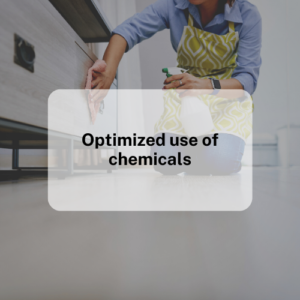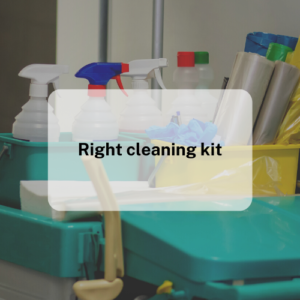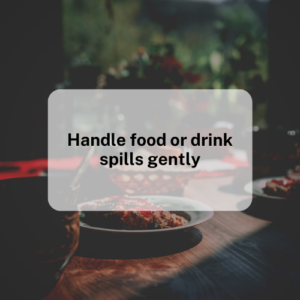High-gloss furniture can be an attractive and stylish addition to any home. However, its shiny surface is prone to scratches, discoloration, and other forms of damage if not properly cared for. To protect the high gloss surface of your furniture, there are a few things you can do.
It is important to avoid using harsh cleaning products that can scratch or dull the surface of your furniture. Instead, opt for gentle cleaners specifically designed for high-gloss finishes, or use a soft, damp cloth to wipe down the surface.
Another thing to keep in mind is to be cautious when placing objects on your furniture to avoid scratching the surface. Always use coasters or felt pads under items such as glasses or vases, and avoid dragging heavy or sharp objects across the surface.
Direct sunlight can cause fading and discoloration over time, so it’s important to keep your high-gloss furniture out of direct sunlight. Consider placing your furniture in a shaded area or using window treatments to filter out UV light.
Regular dusting and polishing can also help protect your furniture’s high-gloss surface. Use a soft, lint-free cloth to gently dust the surface, and then apply high-quality furniture polish to help maintain its shine.
Optimized use of chemicals

Optimizing the use of chemicals is an important step in maintaining a safe and sustainable environment. In various industries, including manufacturing, agriculture, and healthcare, chemicals play a vital role in daily operations. However, the overuse or misuse of these chemicals can lead to negative impacts on both human health and the environment.
One way to optimize the use of chemicals is to reduce their overall consumption. This can be achieved through various means such as the use of alternative chemicals, more efficient processes, and better training for workers. By reducing the number of chemicals used, companies can save money while also reducing their environmental impact.
Another important aspect of optimizing chemical use is to properly manage and dispose of them. Hazardous chemicals should be stored and transported safely to prevent leaks and spills, which can cause harm to workers and the environment. Disposal of chemicals should also be done in a responsible and sustainable way to minimize the impact on the environment.
Chemical safety should also be a top priority when optimizing the use of chemicals. Proper training and protective equipment for workers can prevent accidents and injuries. Additionally, the use of safer alternatives to hazardous chemicals can reduce the risk of exposure and negative health effects.
The concept of green chemistry is also an important aspect of optimizing the use of chemicals. Green chemistry focuses on developing chemicals and processes that are environmentally friendly, with a minimal negative impact on human health and the environment. This can include using renewable resources, reducing waste, and minimizing the use of hazardous chemicals.
Furthermore, the adoption of new technologies can also play a crucial role in optimizing chemical use. For instance, the development of new sensor technologies can help monitor the use of chemicals in real-time and identify potential inefficiencies or hazards. Additionally, automation and artificial intelligence can be utilized to optimize chemical use and reduce human error.
Right cleaning kit

Using the right cleaning kit is an essential component of optimizing the use of chemicals. Having the appropriate cleaning supplies on hand not only ensures that cleaning is done effectively but also helps to prevent the overuse or misuse of chemicals.
When selecting a cleaning kit, it is important to consider the type of surface being cleaned and the type of chemical being used. Some surfaces are more sensitive than others and may require specific cleaning agents or tools. For example, high-gloss furniture requires a gentle cleaner specifically designed for high-gloss finishes.
Additionally, it is important to choose cleaning products that are safe for both the user and the environment. Green cleaning products, which are made from natural, biodegradable ingredients, are a great option for reducing the environmental impact of cleaning. These products are often less harsh than traditional cleaners and do not contain harmful chemicals, making them safer for the user as well.
Along with the cleaning products, it is important to have the appropriate cleaning tools on hand. This may include microfiber cloths, mops, and brushes, among other items. Choosing tools that are appropriate for the surface being cleaned can help to prevent damage and ensure that cleaning is done thoroughly and efficiently.
Furthermore, it is important to regularly maintain and replace cleaning supplies to ensure their effectiveness. Dirty or worn cleaning tools can reduce the efficacy of cleaning and may require the use of additional chemicals to achieve the desired result.
Handle food or drink spills gently

Handling food or drink spills gently is another important aspect of protecting high-gloss furniture and optimizing the use of chemicals. Spills can cause damage to the surface of furniture, and harsh cleaning products used to remove them can cause additional harm.
When a spill occurs, it is important to act quickly to prevent the liquid from seeping into the surface of the furniture. Using a soft, absorbent cloth, gently blot the spill until it has been removed. Avoid rubbing the surface, as this can cause scratches or damage to the high-gloss finish.
Once the spill has been removed, it is important to clean the area thoroughly to prevent staining or discoloration. Use a gentle cleaner specifically designed for high-gloss finishes or a mixture of water and mild dish soap to clean the surface. Avoid using harsh chemicals or abrasive materials that can scratch or damage the surface of the furniture.
Additionally, it is important to regularly clean and maintain high-gloss furniture to prevent buildup and discoloration. Regular dusting and polishing can help to maintain the shine of the surface and prevent the need for harsh cleaning products in the event of a spill.
Overall, handling food or drink spills gently is an important step in protecting high-gloss furniture and optimizing the use of chemicals. By acting quickly, using gentle cleaning products and tools, and maintaining the surface of the furniture, spills can be cleaned effectively without causing harm to the environment or the furniture.
Revisit after finishing

Revisiting the surface of high-gloss furniture after finishing cleaning is an important step in ensuring that the surface has been cleaned effectively and that no damage has been caused during the cleaning process. This step can help to prevent the need for additional cleaning or repairs, as well as optimize the use of chemicals.
After cleaning, it is important to inspect the surface of the furniture for any remaining spots or residue. Use a soft, clean cloth to gently wipe the surface and ensure that all areas have been properly cleaned. If any spots or residue remain, use a gentle cleaner or a mixture of water and mild dish soap to clean the area.
In addition to inspecting the surface for remaining spots, it is important to check for any damage that may have occurred during the cleaning process. High-gloss finishes can be delicate, and harsh cleaning products or tools can cause scratches or damage to the surface. If any damage is detected, address it promptly to prevent further harm to the furniture.
Finally, it is important to maintain the cleanliness of high-gloss furniture over time. Regular dusting and polishing can help to maintain the shine of the surface and prevent the need for harsh cleaning products in the future.
Overall, revisiting the surface of high-gloss furniture after finishing cleaning is an important step in optimizing the use of chemicals and protecting the environment. By inspecting the surface for remaining spots and damage, and maintaining the cleanliness of the furniture over time, the furniture can be kept in top condition without causing harm to the environment or the furniture itself.